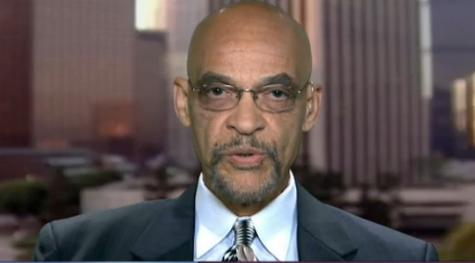Earl Ofari Hutchinson
Every Democratic Presidential contender is falling over each other to wear the mantle of top climate change warrior. With a few tweaks mainly involving how much to spend and what timetables to slap on implementation, their plans pretty much boil down to the same things. They want carbon caps, total emphasis on alternative energy sources, end to fossil fuel subsidies, bans on drilling on public lands, signing the Paris Climate Accord, and so on.
Democratic presidential contender Julian Castro took it one step further. He calls the fight to counter climate change what it is and that’s a civil rights battle. It is that and for good reason. Long before climate change became the global threat that it is, Trump and the climate change deniers notwithstanding, it had another name. That name tells much about the titanic battle ahead against the environmental savaging of the planet. The name it was called then was environmental racism. It was an apt term because the major victims of dirty and unhealthy air and water then as now are the poor, Blacks and Hispanics, in inner city neighborhoods.
In 2002, the issue of the environmental rape peril was rammed on the nation’s public plate when then President Bush announced his Clean Sky Initiative. The problem was it would not clean the skies but dirty them further. It allowed corporations to dump tons more toxic pollutants in the air, delay or exempt enforcement of smog and soot pollution standards, and gut EPA pollution enforcement powers. Though the initiative stalled in Congress, Bush did an end around and used an administrative order to weaken enforcement.
That virtually assured that Blacks, especially poor Blacks, would breather dirtier air. This has had dire health consequences. The Centers for Disease Control and Prevention repeatedly warned that Blacks are more likely to live in neighborhoods with higher air pollution levels and suffer higher rates of respiratory and blood ailments than whites and suffer more deaths. The Bush administration defended its contempt for the lungs of the poor by saying that race should not be as issue in the battle against toxic pollution, and that it will protect all groups against environmental damage. But studies even then found that Blacks were more than twice as likely as whites to live in neighborhoods where pollution posed a severe health hazard.
Despite the severe health risks that toxic damage poses in these neighborhoods, the residents received very little attention or support from environmental groups. Black residents in some cities screamed just as loudly as white, middle class homeowners and urban conservationists about hacked up parkland, toxic dump sites, waste incinerators, garbage dumps, recycling centers, contaminated sewage sites, and power plants in their backyard. They label this racially warped policy, “PIBBY” or, put it in Black’s backyard.
In a milestone report on race and toxic wastes in 1987, the Commission for Racial Justice, a church-based civil rights advocacy group, revealed that blacks are far more likely than whites to live near abandoned toxic waste sites, waste landfills, and sewer treatment plants. They prodded former President Clinton in 1994 to issue an executive order directing federal agencies to intensify efforts to determine the harm toxic waste plants and sites wreak on urban communities.
A decade later, the Government Accounting Office found that all the offsite hazardous waste landfills in most Southern states were situated in or in close proximity to Black neighborhoods. This environmental racism outraged black environmental activists.
The environment assault continued. The GOP, and major polluting corporations tossed more pollutants into the air and water. The courts didn’t help. Residents in poor, highly toxic neighborhoods can sue polluters under the 1964 Civil Rights Act, but they must prove intentional discrimination. This is virtually impossible to prove. The Supreme Court has ruled that private citizens can’t sue to enforce federal environmental regulations that ban discrimination. The EPA has moved with glacial speed to investigate complaints of environmental pollution and has been even more reluctant to take strong action against polluters. Trump has done everything he could to hamstring the EPA while busily green lighting the open of public lands to drilling.
The damage from official neglect of the problem has been profound. Toxic eyesores disfigure Black neighborhoods, degrade property values, and discourage public and private investment in those neighborhoods, and that in addition to the grave health risks that toxic pollution poses to the residents.
Corporate and industrial polluters get away with their toxic assault on low-income, neighborhoods by skillfully twisting the jobs versus environment issue. They claim that the choice is between creating more jobs and business growth and economic stagnation. This has been practically Bible verse for Trump and climate change and environmental damage deniers. Any checks on global warming and environmental destruction will hurt business, stifle growth, and create joblessness. With this mindset firmly in place at the top of the Trump ladder, It will take a real civil rights crusade to combat the mortal peril to the environment. Thankfully, at least one top Democrat finally recognizes that.
Earl Ofari Hutchinson is an author and political analyst. His latest book is Who Can Beat Trump: America’s Choice 2020 (Amazon Kindle). He is an associate editor of New America Media. He is a weekly co-host of the Al Sharpton Show on Radio One. He is the host of the weekly Hutchinson Report on KPFK 90.7 FM Los Angeles and the Pacifica Network


1 thought on “Make Climate Change the New Civil Rights Battle”